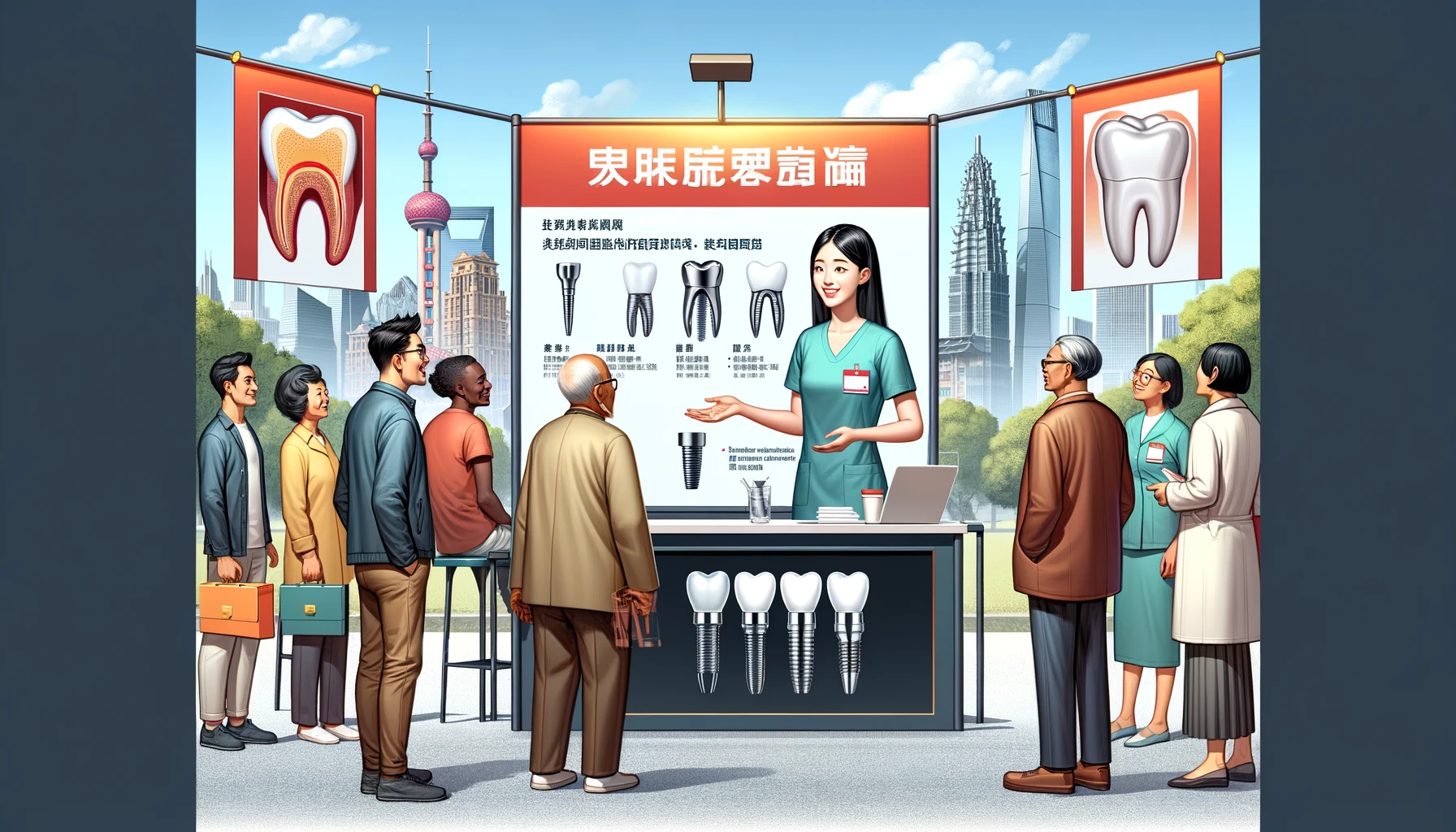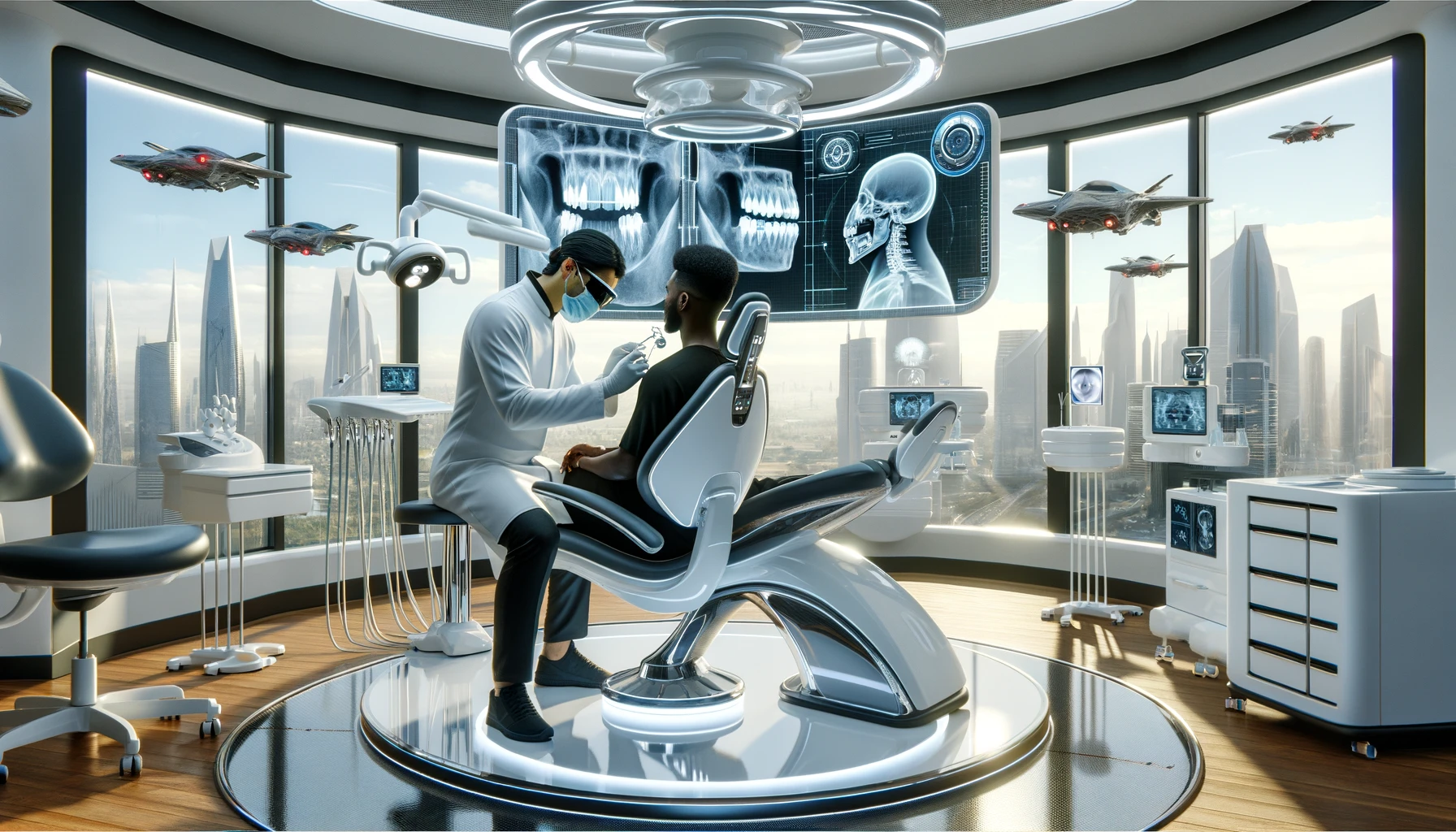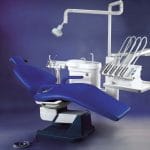In modern dentistry, the dental chair is not just a piece of equipment; it is essential for ensuring both functionality and patient comfort. While its design may appear simple, it incorporates a sophisticated array of engineering features that support various dental procedures. This guide offers an in-depth look at the inner workings of modern dental chairs, including their key components—such as adjustable height, ergonomic design, and built-in technology—as well as recent advancements in materials and design. Additionally, we will discuss critical factors to consider when selecting the ideal chair for your practice, ensuring you make an informed choice that enhances both efficiency and patient experience.
Anatomy of a Modern Dental Chair
Modern dental chairs are essential pieces of equipment in any dental practice, meticulously engineered to enhance both functionality and patient comfort. These sophisticated devices not only support patients during treatment but also improve the efficiency of dental procedures. Key components of modern dental chairs include:
- Base: Provides stability and houses hydraulic or electromechanical lifting mechanisms, allowing for smooth adjustments in chair positioning.
- Chair Back: Features adjustable elements that support the patient’s back, ensuring optimal positioning for various procedures.
- Seat: Ergonomically contoured and equipped with height and tilt adjustments to cater to diverse patient needs, enhancing overall comfort.
- Headrest: Adjustable to provide crucial support for the head and neck, particularly important during lengthy procedures.
- Armrests: Designed to enhance comfort and stability throughout treatment sessions, allowing patients to relax.
- Foot Control: Enables hands-free adjustment of chair positions, allowing dentists to focus entirely on their work without interruption.
Electrical System
Modern dental chairs incorporate advanced electrical systems that significantly enhance operational efficiency:
- Chair Movement: Equipped with motors for smooth lifting, reclining, and tilting tailored to each procedure’s requirements.
- Lighting: Integrated systems ensure optimal illumination of the oral cavity, improving visibility during treatments.
- Delivery Systems: Electrical connections facilitate seamless integration of handpieces, ultrasonic scalers, and other essential instruments.
Key Features and Advancements
The evolution of dental chair technology has introduced features that improve both patient experience and dentist efficiency:
- Ergonomic Design: Reduces strain on dentists while enhancing patient comfort through contoured designs and adjustable supports.
- Programmable Settings: Allow dentists to save preferred positions for specific procedures, significantly streamlining workflows.
- Infection Control: Antimicrobial upholstery materials enhance infection control measures in clinical settings, ensuring patient safety.
- Patient Comfort Features: Innovations such as heated seats, massage functions, and integrated entertainment systems elevate patient comfort and reduce anxiety during visits.
Accessibility Features
Modern dental chairs promote inclusivity by accommodating patients with disabilities:
- Bariatric Chairs: Designed for higher weight capacities while ensuring safety and comfort.
- Chairs with Transfer Assistance: Features like swiveling seats and adjustable armrests facilitate easier transfers for mobility-challenged patients.
- Customizable Controls: Empower patients with limited mobility to independently adjust chair positions according to their needs.
Modern dental chairs are not just functional but are pivotal in delivering a comfortable and efficient dental experience. Their advanced design incorporates ergonomic principles, integrated technology, and features aimed at enhancing both patient satisfaction and procedural efficiency. As technology continues to evolve, these chairs will likely incorporate even more innovative features, further transforming the landscape of dental care.
Types of Dental Chairs
Dental chairs are essential fixtures in dental practices, specifically engineered to enhance patient comfort while facilitating various dental procedures. These chairs come in several types, each meticulously designed to meet the unique demands of different specialties:
General Dentistry Chairs

General dentistry chairs are versatile solutions that accommodate a broad spectrum of routine dental procedures. They are crafted to provide both comfort and functionality, ensuring that patients feel relaxed during their visits. Features often include adjustable headrests and ergonomic designs that support various treatment positions.
Pediatric Dentistry Chairs

Pediatric chairs are specifically tailored for children, featuring smaller sizes along with playful designs and vibrant colors. This thoughtful approach creates a welcoming atmosphere that alleviates anxiety, encouraging children to engage positively with their dental care experience.
Oral Surgery Chairs

Oral surgery chairs come equipped with specialized features such as enhanced patient positioning capabilities and integrated surgical equipment. These characteristics are crucial for facilitating complex oral surgeries, allowing for optimal access and efficiency during intricate procedures.
Orthodontic Chairs

Orthodontic chairs are designed with long appointments in mind, prioritizing patient comfort throughout treatment. They offer adjustable support options tailored to individual patient needs, ensuring a pleasant experience during orthodontic adjustments.
General Dentistry Chairs vs Pediatric Dentistry Chairs
General dentistry chairs are specifically designed to accommodate a wide range of dental procedures for adult patients, ensuring optimal comfort during examinations, cleanings, and surgeries. These chairs typically feature adjustable backrests, armrests, and footrests, enhancing patient comfort while improving accessibility for the dentist. Modern models often include advanced functionalities such as integrated suction tubes, LED lighting, and instrument holders, which streamline the workflow and enable dentists to perform complex procedures efficiently. With ergonomic designs that reduce physical strain, these chairs allow dental professionals to work longer hours without fatigue, ultimately increasing patient throughput. Many general dentistry chairs are powered by electric mechanisms that facilitate easy adjustments in height and position, significantly enhancing both patient comfort and practitioner ergonomics.
In contrast, pediatric dentistry chairs are tailored to meet the unique needs of children during dental visits. These chairs are smaller in size and designed with child-friendly aesthetics, featuring bright colors and playful designs that help reduce anxiety. Key features include adjustable height settings, built-in safety restraints such as seat belts or arm straps, and sometimes even integrated entertainment options like TV screens to distract young patients during treatment. Research indicates that specialized pediatric chairs significantly enhance safety and comfort for child patients, making dental visits less intimidating. However, they may present challenges such as limited leg space for taller dentists or difficulties in achieving close proximity to the child’s mouth.
| Feature | General Dentistry Chairs | Pediatric Dentistry Chairs |
|---|---|---|
| Target Patients | Adults | Children |
| Size | Larger, adjustable | Smaller, child-sized |
| Safety Features | Basic safety features | Enhanced safety (seat belts, restraints) |
| Comfort | Ergonomic for adults | Designed for child comfort |
| Accessibility | Good access for various procedures | Optimized access for pediatric treatment |
| Design | Professional appearance | Playful designs to reduce anxiety |
| Usage Versatility | Suitable for all ages | Best suited for children |
General dentistry chairs provide a versatile solution that accommodates a broad spectrum of patients but may lack specific adaptations required for children. Conversely, pediatric dentistry chairs focus on creating a safe and comforting environment tailored to young patients’ needs while posing challenges regarding dentist ergonomics. Ultimately, the choice between these two types of chairs depends on the specific needs of the dental practice and its patient demographic.
General Dentistry Chairs vs. Oral Surgery Chairs
General dentistry chairs and oral surgery chairs are pivotal in modern dental practices, each designed to cater to specific procedural needs while prioritizing patient comfort and practitioner efficiency. General dentistry chairs are equipped with features such as adjustable height, tilt, and backrest, allowing dentists to position patients optimally for routine examinations and treatments. These chairs often incorporate advanced functionalities like memory foam cushioning, integrated massagers, and even entertainment systems to alleviate anxiety during visits. The emphasis on infection control is paramount, with seamless upholstery and antimicrobial materials that facilitate easy cleaning and reduce cross-contamination risks.
In contrast, oral surgery chairs are specialized for more complex procedures like tooth extractions and implants. They offer enhanced capabilities including a wider range of motion, adjustable headrests, and additional support structures that ensure patient stability during lengthy surgeries. Advanced models feature integrated systems such as intraoral cameras and digital imaging tools, which enhance diagnostic accuracy and allow real-time patient education. Safety features like emergency stop buttons and programmable positions further enhance the surgical experience by ensuring both comfort and security.
Both types of chairs play a crucial role in improving the overall dental experience. For instance, ergonomic designs reduce the risk of musculoskeletal disorders for dental professionals by promoting proper posture during procedures. Furthermore, modern dental chairs are increasingly becoming digital hubs that integrate seamlessly with other dental technologies, streamlining workflows and enhancing patient engagement through interactive displays. Ultimately, the choice between general dentistry chairs and oral surgery chairs hinges on the specific requirements of the practice, balancing versatility for everyday use against the specialized support needed for surgical interventions.
General Dentistry Chairs vs. Orthodontic Chairs
General dentistry chairs are vital tools in dental practices, engineered to support a wide range of procedures such as examinations, extractions, and surgeries. These versatile chairs feature adjustable settings for height, tilt, and backrest, ensuring optimal patient positioning and comfort during treatments. Key components include:
- Dental engine
- Control panels for dentists
- Instrument holders
- Suction tubes
- Lighting systems
Due to their adaptability, general dentistry chairs are commonly found in clinics as they facilitate both routine check-ups and complex procedures. Modern models incorporate advanced innovations like ergonomic designs, memory functions for preferred settings, and integrated technology interfaces that enhance workflow efficiency while improving patient experiences. For instance, many contemporary chairs come equipped with features such as built-in intraoral cameras and multimedia systems that allow for real-time patient education, reducing anxiety by helping patients visualize their dental health conditions.
In contrast, orthodontic chairs are specifically engineered for orthodontic procedures, prioritizing patient comfort during lengthy sessions like brace installations and adjustments. Notable features include:
- Smooth height adjustments
- Precise angle modifications
- Comfortable headrests that support the neck and head
The primary advantages of orthodontic chairs are enhanced comfort for patients and improved accessibility for orthodontists performing intricate tasks. These chairs often feature hydraulic or electric systems that allow for precise control over chair movements, facilitating better access to the patient’s mouth while minimizing strain on the dentist. However, their specialized design limits their application to orthodontic clinics only—making them less versatile than general dentistry chairs.
| Feature | General Dentistry Chairs | Orthodontic Chairs |
|---|---|---|
| Primary Use | General dental procedures | Orthodontic treatments |
| Versatility | High; suitable for various procedures | Limited; specialized solely for orthodontics |
| Patient Comfort | Moderate; adjustable but not specifically designed | High; engineered for prolonged comfort |
| Adjustability | Ergonomic controls allow multiple positions | Smooth height and angle adjustments |
| Integration of Technology | Often includes advanced tech features | Basic tech integration focused on comfort |
| Typical Components | Dental engine, suction systems, lighting | Enhanced headrests with specific tool trays |
The choice between general dentistry chairs and orthodontic chairs depends on the specific needs of the dental practice. General dentistry chairs provide broad functionality suitable for diverse treatments, while orthodontic chairs offer specialized comfort ideal for longer procedures. Each type presents distinct advantages tailored to different aspects of dental care.
Investing in modern dental chairs is crucial not just for enhancing patient comfort but also for improving operational efficiency within dental practices. As the industry continues to evolve with technological advancements, the next generation of dental chairs promises to deliver an unparalleled level of patient experience by integrating features like customizable comfort settings, multimedia entertainment options, and smart sensors that ensure safety and enhance treatment outcomes. This evolution signifies a shift towards a more patient-centric approach in dentistry, where comfort and functionality go hand in hand to foster trust and satisfaction among patients.
Maintenance and Safety
Proper maintenance and adherence to safety protocols are crucial for ensuring the longevity and optimal performance of dental chairs:
- Regular Cleaning and Disinfection: Following manufacturer guidelines for cleaning upholstery, surfaces, and tubing is vital for effective infection control.
- Hydraulic Fluid Checks: Routine inspections of hydraulic fluid levels prevent leaks and ensure smooth chair movement.
- Electrical Safety Inspections: Conducting periodic electrical safety inspections helps identify potential hazards and prevent equipment malfunctions.
Troubleshooting Common Problems
Despite regular maintenance efforts, dental chairs can occasionally encounter issues. Here’s a guide to troubleshooting common problems:
- Chair Won’t Lift or Recline: Begin by checking hydraulic fluid levels, electrical connections, and motor functionality.
- Leaks: Inspect hydraulic lines, fittings, and seals for any signs of damage or wear.
- Unusual Noises: Pay attention to grinding, squeaking, or clicking sounds; these may indicate component wear or mechanical malfunction.
Choosing the Right Dental Chair
Selecting the right dental chair is a crucial investment that significantly impacts your dental practice’s efficiency and patient satisfaction. To make an informed decision, consider these key factors:
- Practice Needs:
Identify the specific procedures you will perform regularly, such as general dentistry, orthodontics, or oral surgery. Choose a chair that accommodates these needs with features like adjustable height, integrated lighting, and multi-function foot controls for hands-free adjustments. - Patient Comfort:
Prioritize ergonomic design elements that enhance patient comfort, including memory foam cushions, adjustable headrests, and easy access for both patients and practitioners. Advanced features like heated seats and massage options can further alleviate anxiety and improve the overall experience. A comfortable chair can lead to higher satisfaction rates and encourage repeat visits. - Durability and Build Quality:
Invest in chairs made from high-grade materials such as stainless steel and premium upholstery. Look for stain-resistant surfaces that are easy to clean, ensuring hygiene compliance. A solid warranty from reputable manufacturers reflects confidence in durability, providing peace of mind regarding future repairs or replacements. - Advanced Features:
Modern dental chairs come equipped with innovative technology that enhances functionality. Features such as built-in LED lights, touch-screen controls, and USB ports for charging devices streamline operations. Additionally, anti-microbial upholstery and seamless designs reduce contamination risks while simplifying cleaning. - Budget Considerations:
Set a realistic budget while exploring options that provide excellent value without compromising quality. Consider long-term costs associated with maintenance and potential upgrades. While entry-level chairs may be tempting, investing in higher-quality options can save money on repairs and replacements over time.
By carefully evaluating these factors, you can select a dental chair that meets both your practice’s needs and your patients’ expectations effectively. The right chair not only enhances operational efficiency but also fosters a welcoming environment that prioritizes patient comfort, ultimately reflecting your commitment to high-quality dental care.
Future Trends in Dental Chair Technology
The dental chair technology sector is experiencing rapid advancements, with key trends poised to enhance patient care and practice efficiency in 2024 and beyond.
- AI Integration: Smart dental chairs are now equipped with artificial intelligence (AI) that analyzes patient data to optimize treatment plans and improve diagnostic accuracy. For instance, AI algorithms can swiftly assess dental images, identifying issues such as cavities and gum disease that may be overlooked by the human eye. This integration not only aids in precise treatment recommendations but also enhances patient understanding of their oral health through visual aids, fostering trust and engagement during visits.
- Voice Control: The introduction of voice-activated controls offers dental professionals a hands-free method to adjust chair settings, significantly improving workflow during procedures. This innovation allows practitioners to maintain focus on patient care while managing equipment more efficiently. Features like automatic adjustments based on patient posture further enhance comfort during treatment.
- Advanced Imaging Systems: The adoption of cutting-edge imaging technologies, including 3D intraoral scanners and Cone Beam Computed Tomography (CBCT), facilitates quicker diagnoses and personalized treatment planning. These systems provide real-time imaging that reduces appointment times and enhances communication between dentists and patients, ensuring clarity in treatment discussions.
- Sustainability Initiatives: As environmental concerns grow, the dental industry is shifting towards eco-friendly materials and energy-efficient designs for dental chairs. Manufacturers are increasingly using recyclable and biodegradable components, reflecting a commitment to sustainability while maintaining high standards of patient comfort and safety.
- Modular Designs: The trend towards modular and integrated chair designs allows for easy customization based on specific treatment needs. This flexibility enables dental practices to adapt their equipment for various procedures, enhancing both functionality and patient experience.
- Cybersecurity Measures: With the rise of connected devices in dentistry, robust cybersecurity protocols are essential to protect sensitive patient data. Innovations in dental chairs now include advanced security features that ensure compliance with legal standards while safeguarding patient information.
By embracing these transformative advancements, dental practices can significantly improve operational efficiency while delivering superior patient experiences. The future of dental care is not just about comfort; it’s about creating a comprehensive ecosystem that integrates technology, sustainability, and patient-centered care to elevate the overall quality of dentistry.
Conclusion
Modern dental chairs represent a remarkable fusion of engineering and design, playing a crucial role in delivering optimal dental care. By understanding the intricacies of their inner workings, the advancements in features, and the factors to consider when choosing a chair, dentists can make informed decisions that benefit both their practice and their patients. As technology continues to evolve, we can anticipate even more innovative features that will further elevate the standards of dental care and enhance the overall patient experience.














